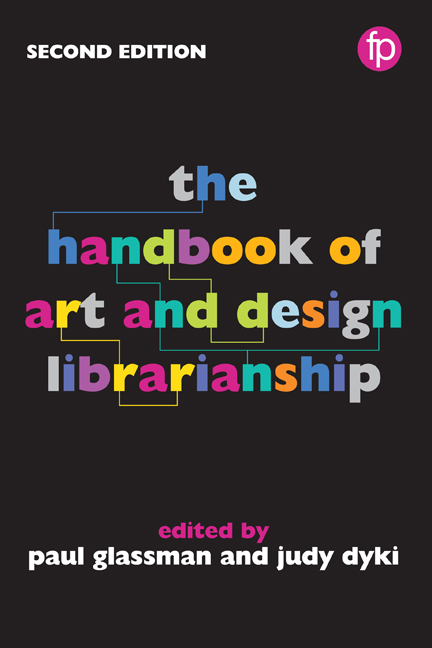Book contents
- Frontmatter
- Contents
- List of figures and tables
- Notes on contributors
- Foreword
- Preface
- Part I Roles and responsibilities
- Part II Materials and collection management
- Part III Teaching and learning
- Part IV Knowledge creation
- Part V The physical environment
- Part VI Promotion and sustainability
- Appendix Library profiles
- Index
Part III - Teaching and learning
Published online by Cambridge University Press: 08 June 2018
- Frontmatter
- Contents
- List of figures and tables
- Notes on contributors
- Foreword
- Preface
- Part I Roles and responsibilities
- Part II Materials and collection management
- Part III Teaching and learning
- Part IV Knowledge creation
- Part V The physical environment
- Part VI Promotion and sustainability
- Appendix Library profiles
- Index
Summary
User education is a vital part of the academic librarian's role. Instruction is often the best way to engage students who may be uncomfortable with visiting a library in person. Because they might be visual or tactile learners – and because visiting the library to examine collections is so essential to skilled use of an art library – users in art libraries present challenges for librarians that may not arise in the course of a standard instruction session at college or university. Like all academic librarians, art librarians work with diverse levels of research expertise, but we must also move fluidly between discussing art with practising artists and designers and discussing art with art historians and educators, bearing in mind the differences in each group's research goals and outcomes. In this section we examine the possibilities and difficulties inherent in art library instruction for artists, designers and art historians. The following chapters explore methods for weaving information literacy instruction into a studio class; the place of the ACRL threshold concepts in the visual context of art and design; how to capitalize on special collections with art history students; metaliteracy as an appropriate perspective for enlarging information literacy for visual and tactile learners; the art history student's particular research and information needs; how to employ instructional design principles; and culturally sensitive art information literacy in societies with religious restrictions on image and media consumption.
- Type
- Chapter
- Information
- The Handbook of Art and Design Librarianship , pp. 137 - 138Publisher: FacetPrint publication year: 2017

